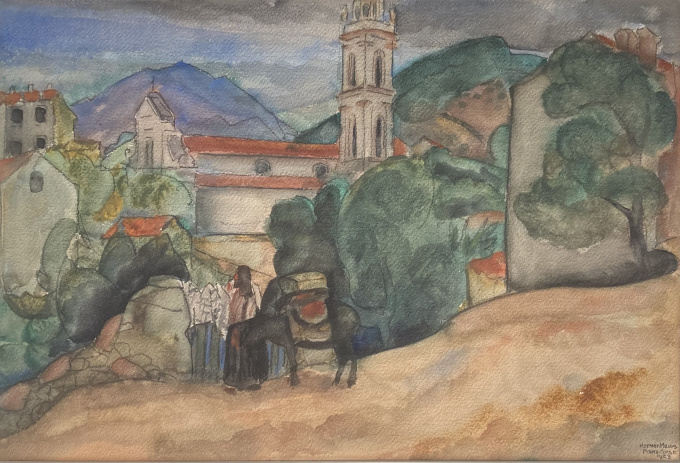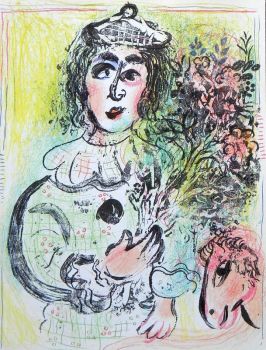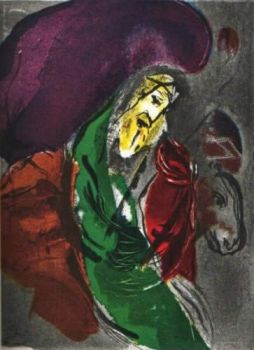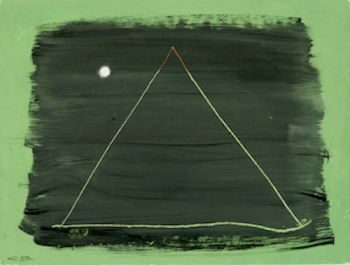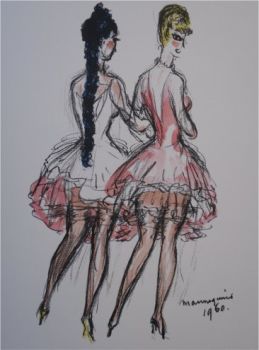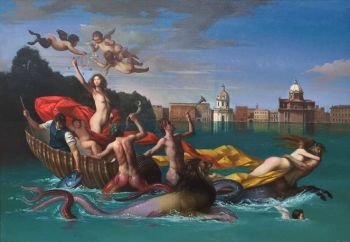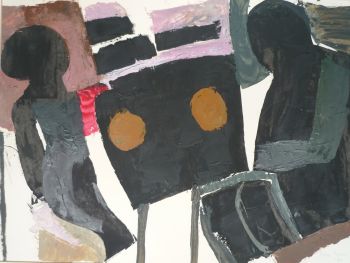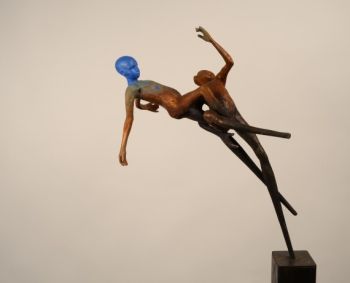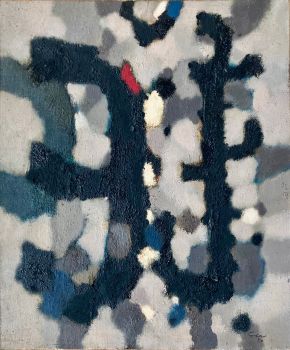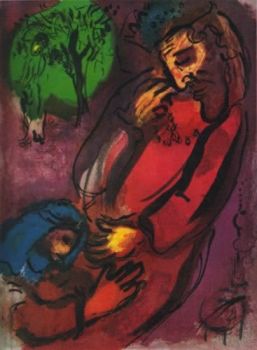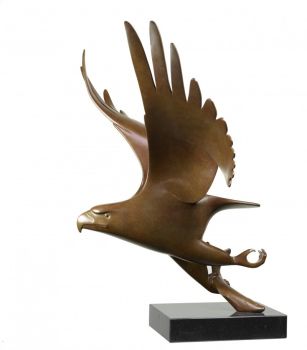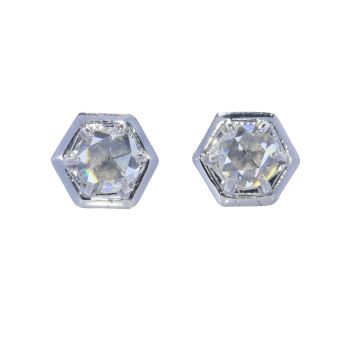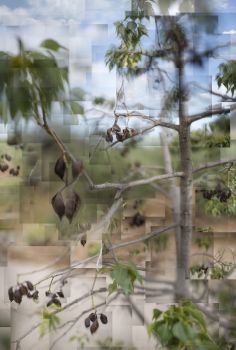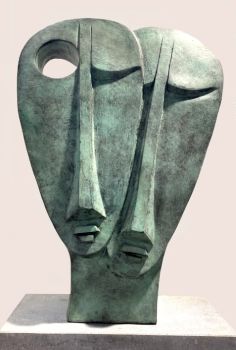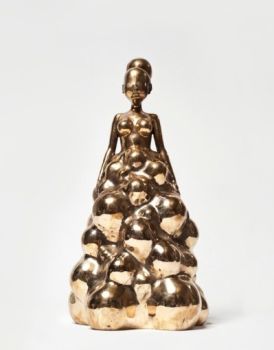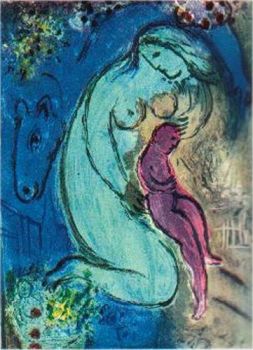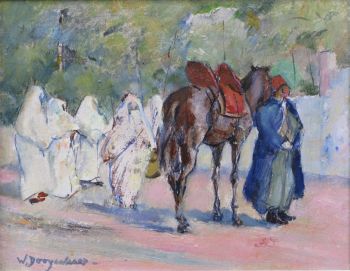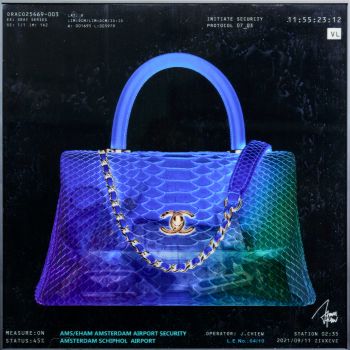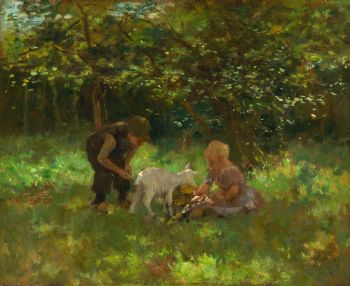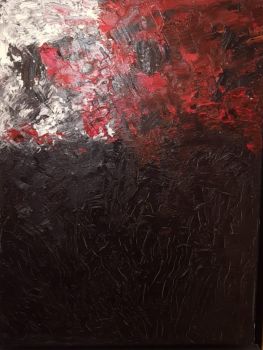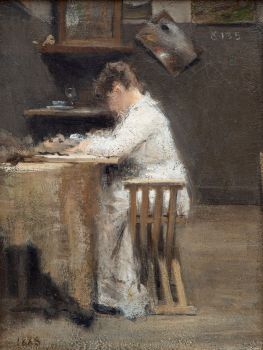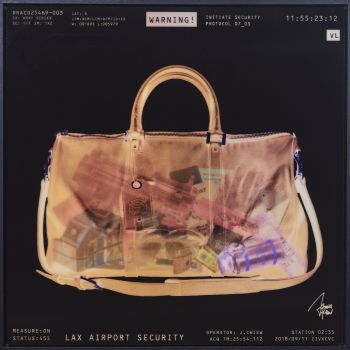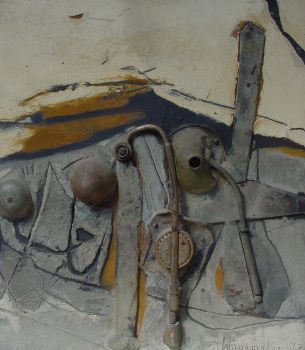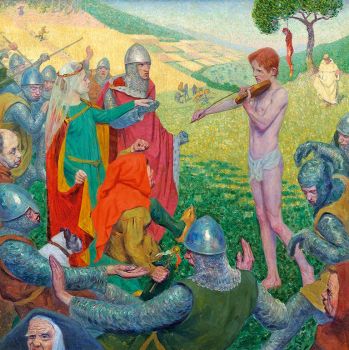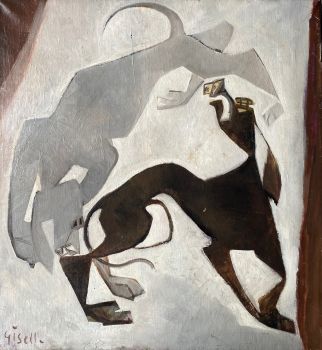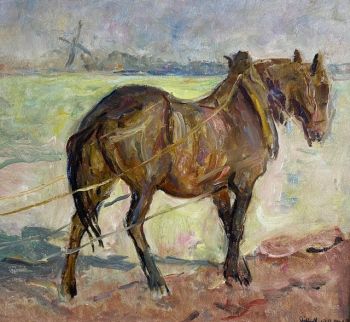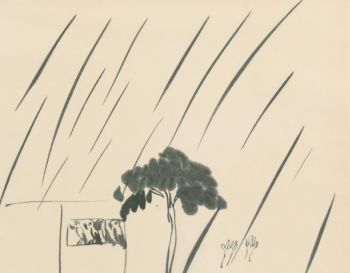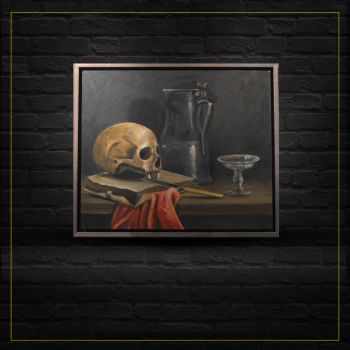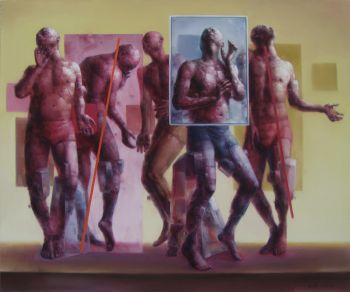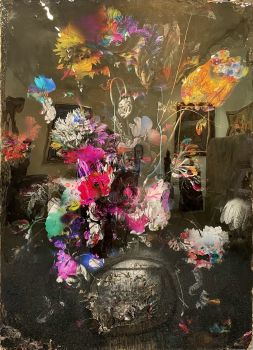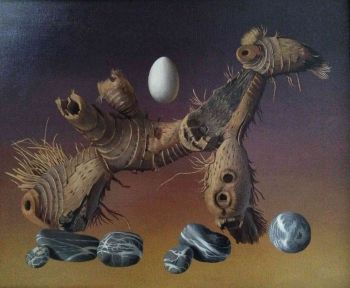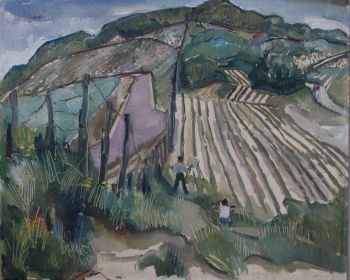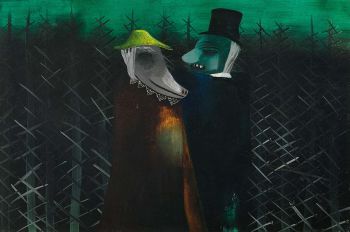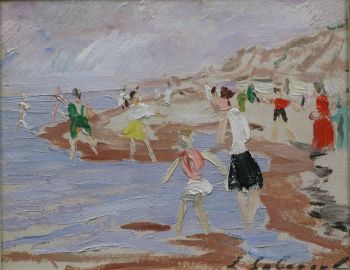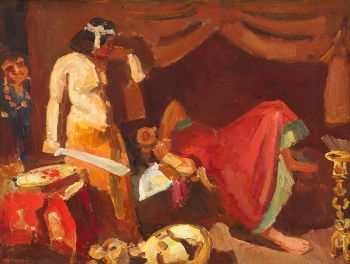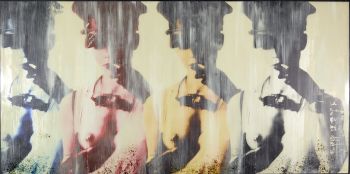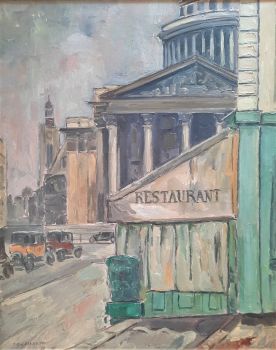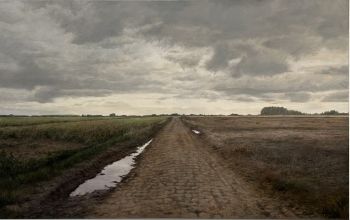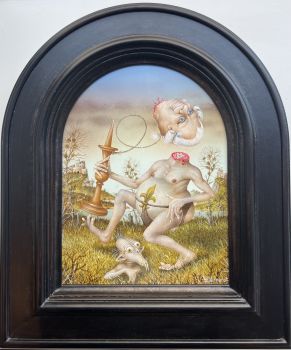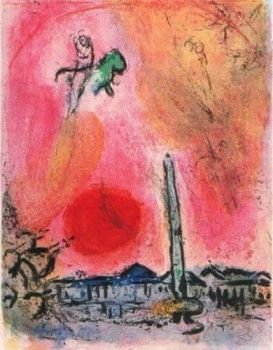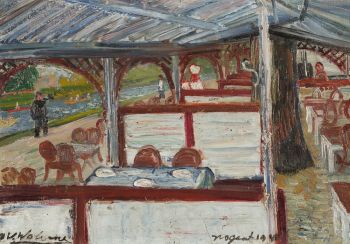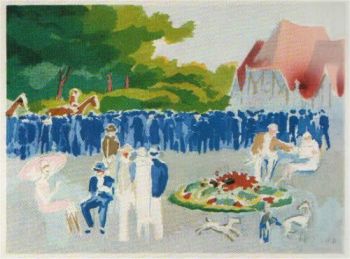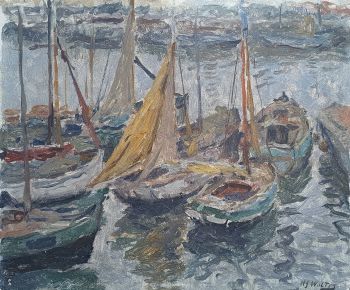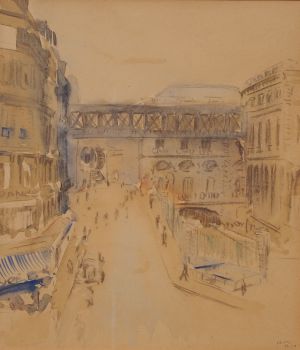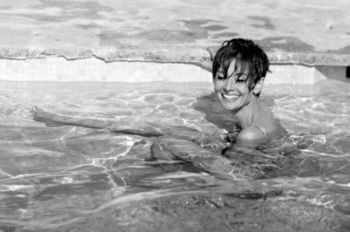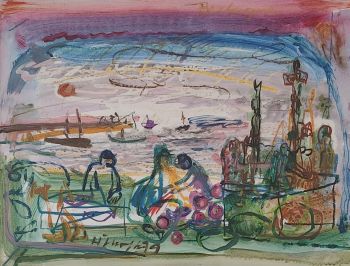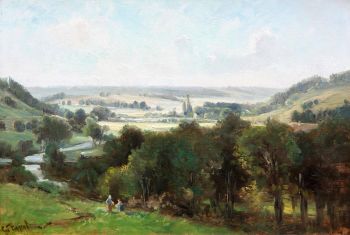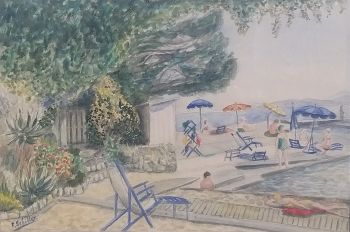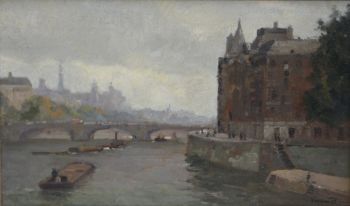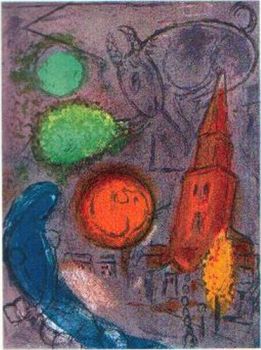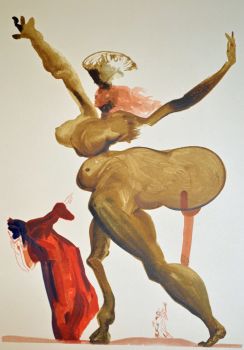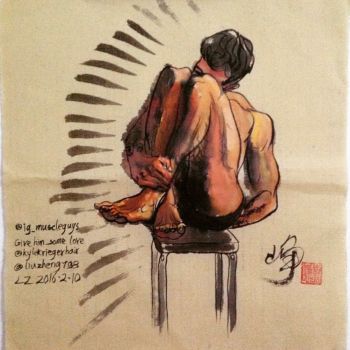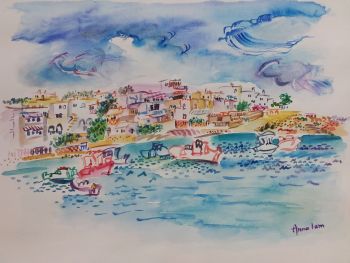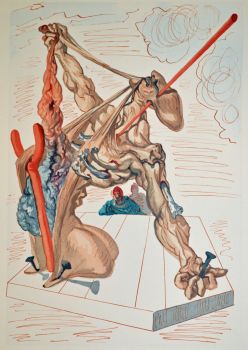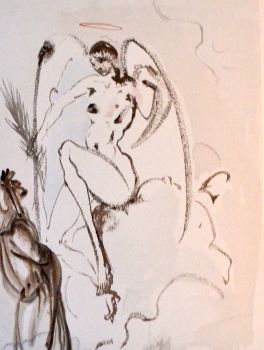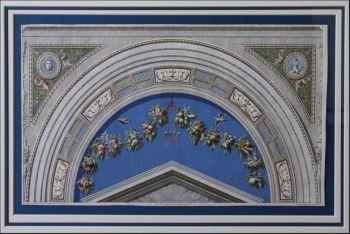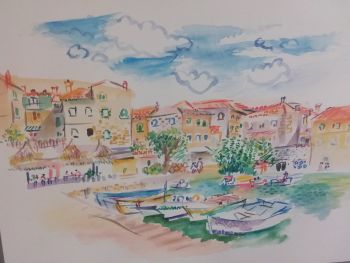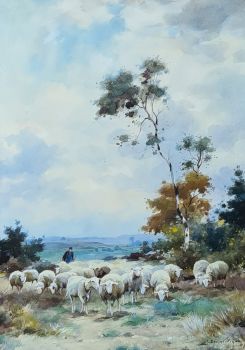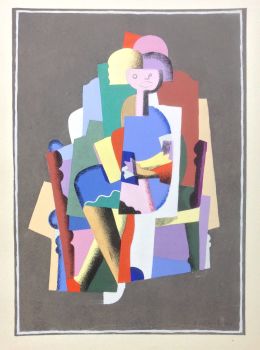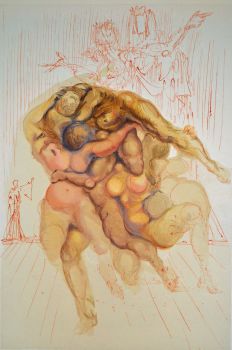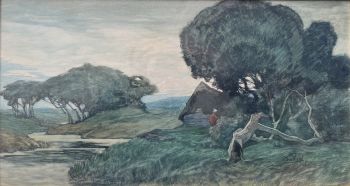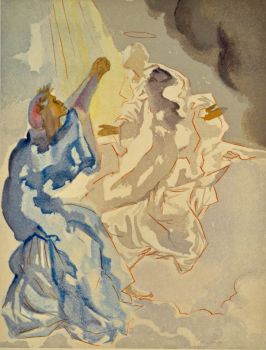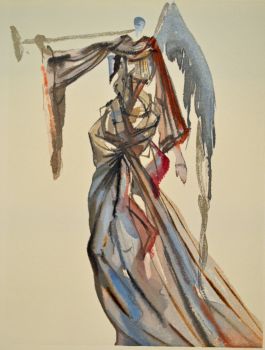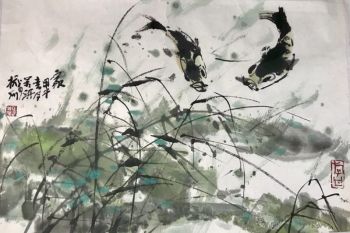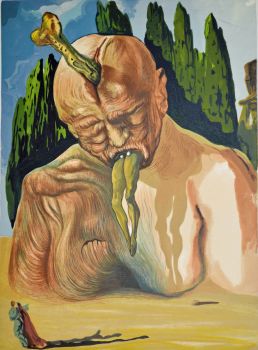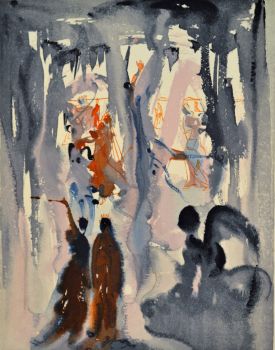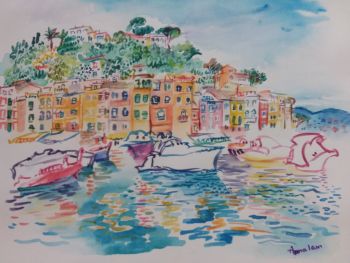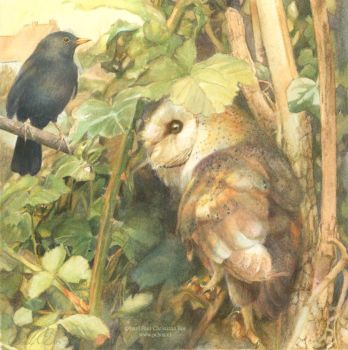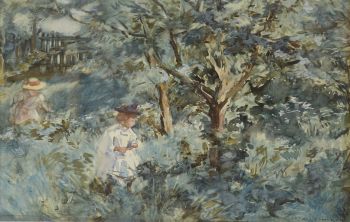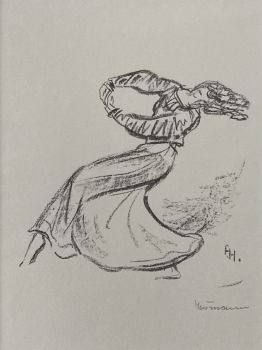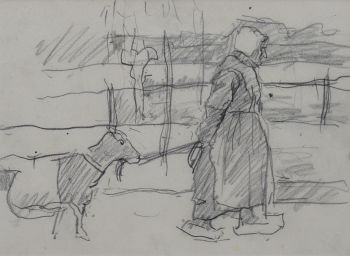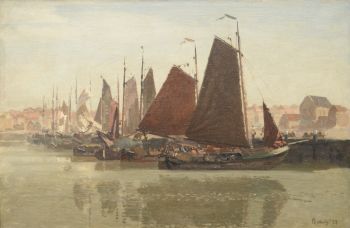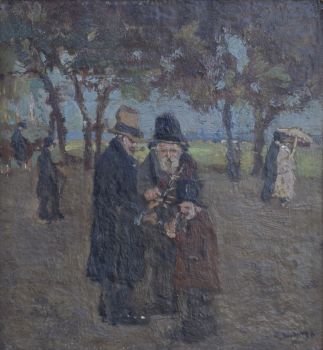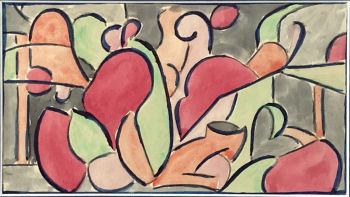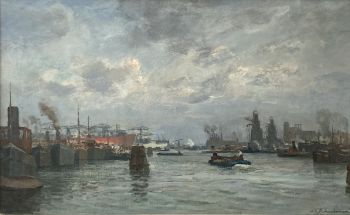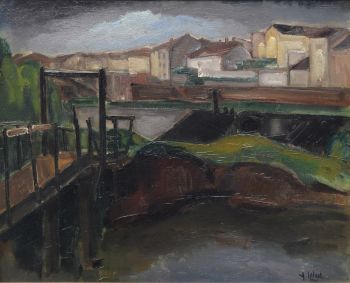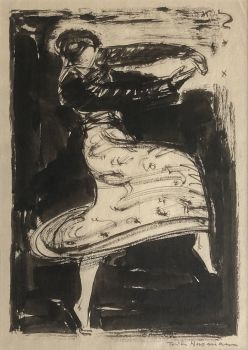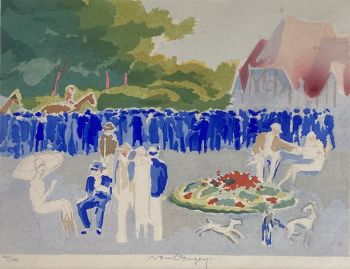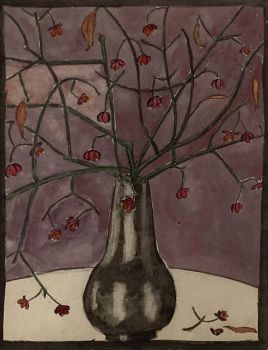Piana Corsica 1923
Harmen Meurs
Watercolour
33.50 ⨯ 49.50 cm
Currently unavailable via Gallerease
Artiquair
- About the artworkMeurs studied in the evenings at the Rijksakademie van Beeldende Kunsten in Amsterdam. He lived and worked mainly in Wageningen, Amsterdam and he traveled a lot to France. From 1919, Meurs was able to run his own studio. In the same year he joined the artist group De Onafhankelijken. Which artist spent a lot of time at Corsica.
As a painter, Meurs developed into a successful artist, who also exhibited abroad. He painted landscapes, figures and still lifes in an initially post-impressionistic style. Because he was inspired by the Cubism expressionism (Bergense School) and the Fauvism of Kees van Dongen (1877-1968), his work became increasingly realistic from the 1920s. It showed a relationship with the 'Neue Sachlichkeit'. From 1925 he started to work more realistically.
Harmen Meurs was friends with Carel Willink (1900-1983). Willink later characterized the painter as a 'dandy' because of his always neat clothing and appearance. With neatly trimmed long sideburns. This was not to say, however, that Meurs was only active in elite artistic circles. On the contrary.
Meurs was appointed chairman of The Independents in 1929. In this position he organized the controversial exhibitions Neue Sachlichkeit (1929) and of French and Belgian surrealists (1930).
As an anti-fascist, he expressed his social commitment and political stance by bringing in a banned exhibition from Berlin in 1933 - as chairman of the Independents. The Amsterdam mayor Van der Vlugt and director Baard of the Stedelijk Museum banned the exhibition.
During the occupation he refused to become a member of the Reichskulturkammer and thus became isolated as an artist. During the war he continued to paint anti-Nazi works. After the occupation he left Amsterdam and moved into a house near Putten with his wife, the Jewish painter Berthe Edersheim.
After the war he led a more or less withdrawn life. Disappointed with what had happened in WW II. - About the artist
Harmen Hermanus Meurs was a Dutch painter and aquarellist. Between 1909 and 1912 he went to the Rijksschool voor Kunstnijverheid and the Rijksakademie van Beeldende Kunsten (National Academy of Fine Arts), both in Amsterdam.He was teached by Louis Raemaekers, a political cartoonist. In 1918, Meurs joined the artist accociation De Onafhankelijken (The Independents). He was their chairman until 1932.
Meurs became a well-known artist who also exhibited abroad. He painted landscapes, cityscapes, and portraits but mainly specialized in painting peasantry scenes and still lives of flowers. His style initially was post-Impressionist. Later he was inspired by Expressionism and Fauvism. From the 1925 on, his work got more realistic and was akin to the ‘Neue Sachlichkeit’ (New Objectivity).
He was active in the Netherlands and France. He went to Paris for an exhibition of German and Belgium Surrealism in 1930, on behalf of De Onafhankelijken. That exhibition, in the Stedelijk Museum, was the first exhibition on Surrealism in the Netherlands.
Meurs was a fierce opponent of the Nazi’s and showed that in his works. He refused to become a member of the Reichskulturkammer and became isolated as an artist. After the war he travelled to Spain and France. Meurs kept painting until his death in 1964.
Are you interested in buying this artwork?
Artwork details
Related artworks
- 1 - 1 / 1
- 1 - 4 / 24
- 1 - 4 / 24
Bob Buys
Paris, Gare de L'Est, Passerelle de la Rue d'Alsace1940 - 1950
Price on requestAdelwein Kunst
Herman Bogman jr.
Le Pont au Change et Le Conciergerie in Paris 1935 - 1945
Price on requestAdelwein Kunst
1 - 4 / 20Adrianus Johannes Groenewegen
Schaapsherder met kudde1874 - 1963
Price on requestGalerie Het Noorderlicht
1 - 4 / 24- 1 - 4 / 12

